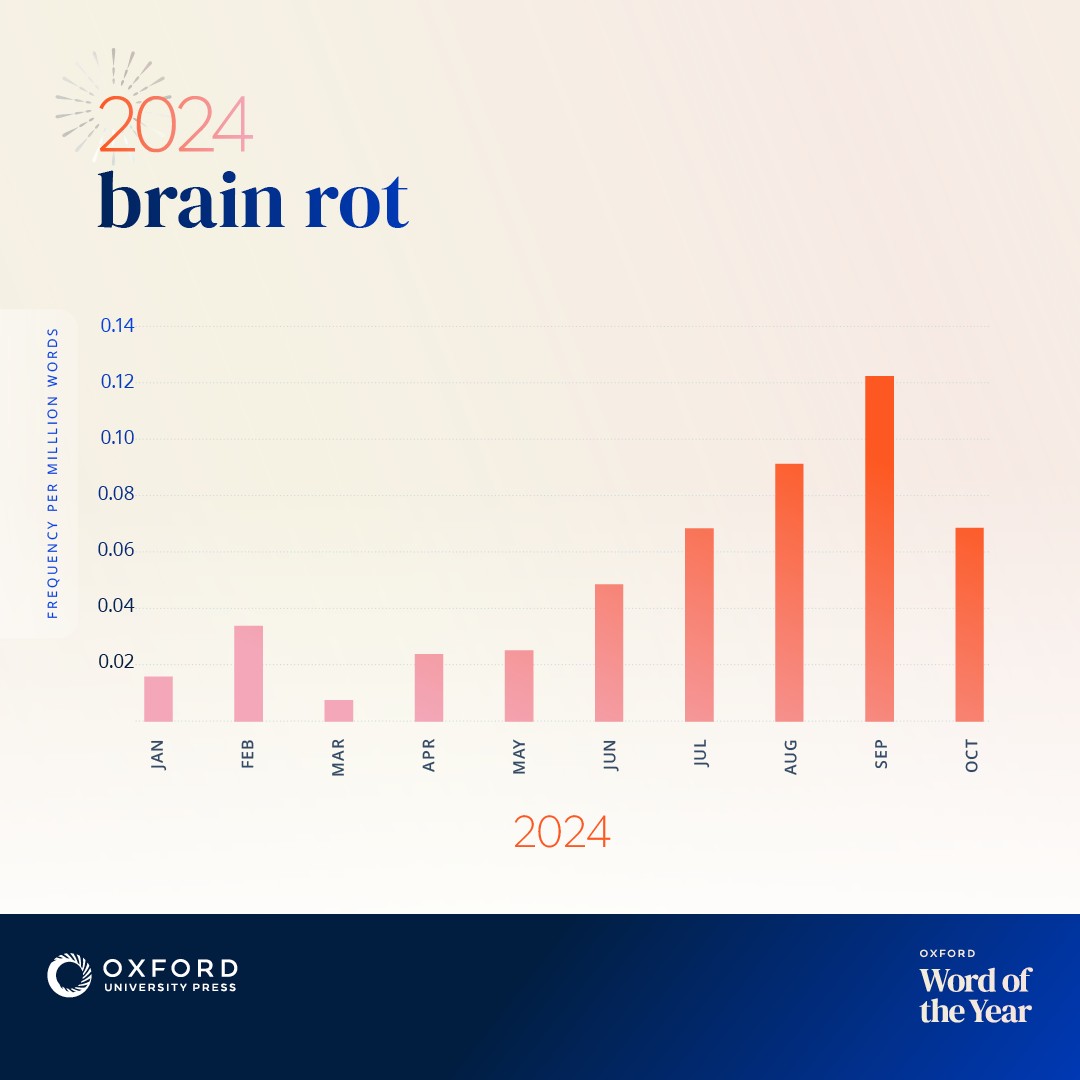Oxford Languages has declared “brain rot” as the Oxford Word of the Year for 2024, chosen by public vote. This selection highlights contemporary concerns about the effects of consuming excessive, low-quality content online, particularly on social media platforms.
Defining Brain Rot
Brain rot is defined as “the supposed deterioration of a person’s mental or intellectual state, especially viewed as the result of overconsumption of material (now particularly online content) considered to be trivial or unchallenging. Also: something characterized as likely to lead to such deterioration”.
The term “brain rot” has seen a resurgence in usage, with a 230% increase between 2023 and 2024. This reflects growing anxieties about the impact of spending too much time consuming shallow online content.
Historical Roots
Interestingly, the first recorded use of “brain rot” dates back to 1854 in Henry David Thoreau’s Walden. Thoreau used the term to critique society’s inclination to favor simplistic ideas over complex ones, which he saw as a sign of declining mental effort: “While England endeavours to cure the potato rot, will not any endeavour to cure the brain-rot – which prevails so much more widely and fatally?”
Brain Rot in the Digital Age
The term has taken on new meaning in today’s digital landscape. Originating on platforms like TikTok, particularly among Gen Z and Gen Alpha, “brain rot” is now prevalent in mainstream discussions concerning the adverse effects of excessive online content consumption.
 A trend graph depicting the increasing usage of the term "brain rot" over time, highlighting its rise in popularity in recent years.
A trend graph depicting the increasing usage of the term "brain rot" over time, highlighting its rise in popularity in recent years.
In 2024, “brain rot” describes both the cause (low-quality online content) and the effect (the perceived negative impact on individuals and society).
The term is closely linked to specific online culture phenomena. Examples include Alexey Gerasimov’s Skibidi Toilet video series and “only in Ohio” memes. These have given rise to what’s being called “brain rot language,” where nonsensical terms like ‘skibidi’ and references to ‘Ohio’ (meaning something embarrassing or weird) emerge from viral content and permeate offline communication.
Concerns About Mental Health
Beyond humorous usage, there’s an escalating conversation about the potential negative impacts of consuming such content, particularly on the mental well-being of children and young adults. Mental health centers have even begun publishing advice on identifying and avoiding “brain rot”.
Casper Grathwohl, President of Oxford Languages, notes the significance of “brain rot” as a reflection of our evolving virtual lives:
“Looking back at the Oxford Word of the Year over the past two decades, you can see society’s growing preoccupation with how our virtual lives are evolving, the way internet culture is permeating so much of who we are and what we talk about… ‘Brain rot’ speaks to one of the perceived dangers of virtual life, and how we are using our free time. It feels like a rightful next chapter in the cultural conversation about humanity and technology.”
He also points out the self-aware adoption of the term by Gen Z and Gen Alpha, acknowledging the potential harms of social media content they actively create and consume.